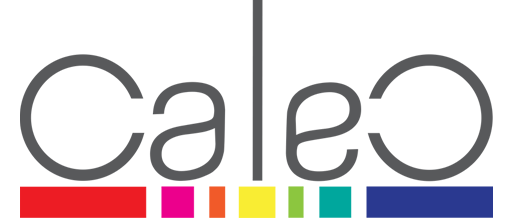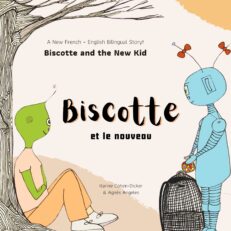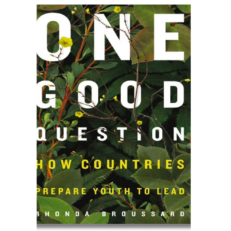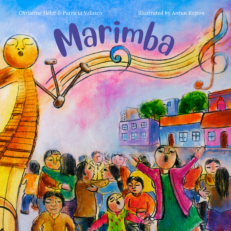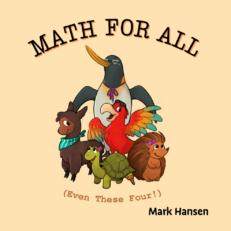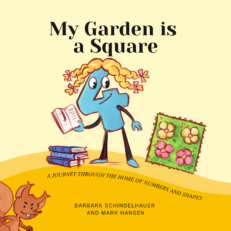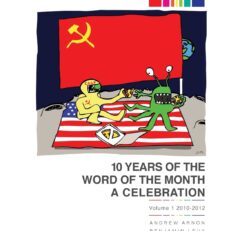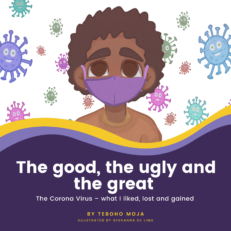Spanish is the second most common language spoken in New York City, with native Spanish speakers making up nearly a quarter of all New Yorkers. Consequently, many of the city’s dual-language programs, both new and established, are in Spanish and English. Spanish programs have spread rapidly, often developing in neighborhoods with high numbers of English Language Learners. But the scope of Spanish dual-language programs reaches far beyond native Spanish speakers, enrolling students of varying backgrounds and abilities. The Spanish Bilingual Revolution was at the forefront of the Bilingual Revolution and today over 10,000 children attend Spanish dual-language programs in New York City. Much of the success of today’s dual-language programs is thanks to the activism of those who worked to jumpstart Spanish bilingual programs in New York, as well as to the creativity and dedicated support of educators and administrators. Their story of embracing dual-language programs to better serve the Spanish-speaking community is both inspiring and motivating, and illustrates how far bilingual education has come over the recent decades.
How It All Began
It is tempting to think of dual-language programs as a creation of the recent past, but the promise of bilingualism, biliteracy, and biculturalism that is central to today’s dual-language programs greatly resembles what early Puerto Rican activists and educators in the 1960s hoped for when campaigning for the first bilingual programs. Ofelia Garcia explains:
Dual-language, if done well, is precisely what the Puerto Rican community would have wanted for their children back in the beginning. These parents were demanding an education that was truly bilingual, no matter what the linguistic characteristics were.
However, even though these early activists desired bilingual Spanish-English programs that would allow their children to grow in both languages, that was not what they originally got. This is because the story of bilingual education in New York and in the United States is complicated by political and social battles that translated into varying outcomes in the classroom. The debate on what bilingual education is or should be is ongoing and frequently becomes intertwined with heated discussions on immigration and assimilation in the United States. Garcia describes the underlying tensions at this earlier time and its impact on Spanish bilingual education:
Bilingual education in those days was in a different place. The city was mostly Puerto Rican at the time. They were all Spanish-speaking and it was very political. These pioneers wanted a bilingual program that would take care of the whole bilingual continuum of the community, not just those who did not know English. The programs implemented soon became irrelevant, because the community became fully English-speaking and therefore did not qualify. Since the beginning, there has been a tension between what communities wanted, what school authorities were willing to give them, and then, once this whole dual-language movement started, the realization that they were being left out.76
Instead of dual-language classrooms that build upon fluencies in both English and Spanish, the bilingual programs offered to Spanish speakers from the outset were largely intended to promote monolingualism and the mastery of English. These programs were only offered to students who lacked proficiency in English and utilized Spanish only as a tool to teach English, thereby cutting off access to many Spanish heritage students who were born in the United States and who came in with an existing knowledge of the English language.
But the tide began to change in the field of bilingual education. Research began to be published that pointed to the benefits of bilingual education when taught in two languages. Bilingual activists rose to positions of power within school districts and administrations in New York City, elevating bilingual issues to the top of the agenda. Carmen Dinos, a retired professor of education and a pioneer in the field of bilingual education, succeeded in creating New York’s first bilingual public school programs in the 1960s and 1970s. She explains her experience at this turning point in the history of bilingual education:
Towards the end of the Civil Rights movement, the Bilingual Office was developed as a division of the Board of Education, with Hernan LaFontaine—the former principal of P.S. 25 in the Bronx, the first bilingual school—as the director. They were dealing with the whole city at the policy level. That’s when I understood that education is so tightly connected with politics. The field bloomed at the same time; more and more researchers in Canada were proving the benefits of bilingual education. Suddenly, this was not a whim. There was solid proof that it was good for kids.
School administrators also began to pick up on the “dual-language” trend sweeping the nation, cleverly hiding the loaded term “bilingual,” which had taken on a negative context. Ofelia Garcia describes one founding principal’s logic and strategy to implement a similar program at his school:
Back then, there were a few luminaries. One was Sid Morrison, the principal of P.S. 84. Much to his credit, in the mid-1980s, Sid started saying, “What we have doesn’t work. The community has changed; it is no longer Spanish-monolingual it is gentrifying quickly. We have to have a program for whoever wants to join.” To distance itself from the transitional bilingual programs, he picked up this label of “dual-language,” which was beginning to gain traction in the country.
This strategy worked. With the help of committed educators, administrators, and parents, Spanish dual-language programs took off in New York City. As of this writing, 45 schools serving more than 10,000 students across the city host Spanish dual-language programs from Kindergarten to high school. Former Department of Education Chancellor Carmen Fariña’s administration put an unprecedented focus on developing bilingual education programs. Deputy Chancellor Milady Baez describes the philosophy of the Department in regard to bilingual education as the following:
We understand that bilingual education has a history in the United States. It has not been always a very positive one. There have been many groups of people who have had to fight, to struggle. We have had to convince parents that their children needed to be educated in more than one language. We know that children have the potential; they have the ability to transfer their knowledge from one language to the other. We know that when our students speak more than one language, they are higher achievers than students who only speak one language.
This kind of all-encompassing support for bilingual education at the highest administrative level is overwhelmingly powerful, as these leaders hold the keys to the creation of scores of dual-language programs.
Milady, herself a native Spanish speaker, also has a deep personal connection to the field of bilingual education. From not being able to understand the language of instruction in the classroom as a young and recently-arrived immigrant to United States, Milady Baez went on to become a New York City bilingual teacher and later a school principal in Jackson Heights, Queens. There, Milady was able to create what she called her “dream school” where she opened dual-language and bilingual enrichment programs in Spanish so that, in her words, “every student and family was afforded the opportunity to access the program of instruction they so desired.”
Currently, as Deputy Chancellor in the Department of Education, Milady is at the helm of the management and creation of programs for English Language Learners. She constantly encourages parents to fight for their right to bilingual education programs in public schools. To achieve their goals, sometimes all it takes is to ask, as Milady confirms:
Parents are powerful in our educational system. Many parents do not know that if they unite and that if they ask for these programs, principals have the responsibility of making it happen in their schools.
Powerful alliances that are formed with educators and administrators like Milady often start with parent grassroots movements and a simple ask. Milady’s warm and receptive welcome of dual-language programs and bilingual opportunities for students of varying linguistic backgrounds, and her commitment to serving her student population in a way that fits their needs and goals, is an outstanding example of the positive role administrators can play in the Bilingual Revolution.
Some Shining Examples
One of the myriad of Spanish dual-language programs that exist today in New York City is at P.S. 133 in Brooklyn. There, the first Spanish-English dual-language Kindergarten class opened in 2012. As the Spanish-speaking world is rich in diversity, children who participate in the program at P.S. 133 tap into the long history and relationship between the Hispanic community and the City of New York. Following a 50/50 model, half of the students are English-speaking and half Spanish-speaking, with half the daily instruction for all subjects in Spanish and the other half in English. Last year, P.S. 133, along with fourteen other schools in New York City, was designated a Model Dual-language Program by former Department of Education Chancellor Carmen Fariña.
The Amistad Dual Language School was founded by a group of teachers and parents led by Elia Castro, a bilingual educator, with the support of Lydia Bassett, the former principal of the W. Hayward Burns School, and New Visions for Public Schools, a nonprofit that works to revitalize and improve New York City public schools. Amistad opened in Northern Manhattan in 1996 and provides its students in Washington Heights, Hamilton Heights, and Inwood with a Spanish-English dual-language curriculum for both English- and Spanish-dominant students.
The underlying principle of instruction at Amistad is that children acquire a second language in the same way they acquire their first. Teachers utilize many English as a Second Language (ESL) strategies for teaching Spanish as a Second Language, proven to be effective regardless of the child’s native language. The school embraces a multidisciplinary instructional approach by offering a comprehensive program in music, dance, and visual and theater arts in addition to more customary standard academic subjects. Through their experiential and project-based learning approach, Amistad nurtures creativity and cultivates intellectual curiosity in its students—all while achieving language proficiency and attaining a high standard of academic success. The school’s mission statement embodies their unique approach to dual-language education:
The Amistad Dual Language School is a community of learners that embraces the unique path of each individual. Together we foster a sense of communal responsibility and solidarity through the celebration of culture, language, and diversity. Our children will move forward, ready to meet the academic and the social demands of the larger community, taking with them the magic of discovery and the power of two languages. Our language allocation policy varies by grade to accommodate both conversational and academic language acquisition.
Amistad has been rated a Five Star school by Great Schools, a nationwide online source of school performance rankings and information. The school’s proven track record of success in graduating bilingual students is the primary reason why it is so attractive to families. According to Miriam Pedraja, Amistad’s former school principal, by 3rd grade approximately 70 percent of Spanish-dominant language students who enrolled in the school in Kindergarten had become equally proficient in English and Spanish. 83
Cypress Hills Community School in Brooklyn takes a different approach. It offers a hybrid Spanish dual-language program in both a school and community center environment. In 1997, with support from New Visions for Public Schools, the school was founded by parents and the Cypress Hills Local Development Corporation. Strong parent leadership is a hallmark of the school, as evidenced by the fact that Maria Jaya, a parent herself, currently acts as a co-principal. She recalls how she and other parents fought for their children’s education:
The revolution started thirty years ago, only to have the [original] program open ten years later. Our children were in a so-called “bilingual” program, but the programs were not well designed or well prepared. Some teachers did not have the right licenses. Parents didn’t have the right information. The way that I signed students up for the bilingual program was not based on their needs, but based on if they had a Latino-sounding name. Parent meetings were all in English, so we requested a translator. Finally, they started translating but they sent those who requested translation services to the corners of the room. This put a huge responsibility on the person translating and parents struggled to give feedback, segregated in one corner. That was our first fight: we wanted to participate and we wanted to be part of our children’s education, but we didn’t have an equal opportunity to do so. Soon, the teachers noticed this group of parents that really wanted change, and they started giving us information.
The Cypress Hills story echoes the struggles that Spanish bilingual education faced throughout New York City as parents advocated for dual-language programs that empowered their communities in both languages. It took persistence and a lot of courage to demand the services and programs that they wanted and deserved, especially after years of program offerings that did not meet the expectations of the Spanish-speaking community.
But the obstacles Cypress Hills faced were not only limited to the classroom or parent gatherings. Throughout its first thirteen years of existence, the Cypress Hills Community School operated within other school buildings and without a permanent campus. Cypress Hills had no access to a gym, lacked its own library and auditorium, and suffered from major classroom overcrowding—with many sections conducted in aging portable classrooms. In 2010, the school moved into a brand-new building, the result of years of tremendously hard work on the part of parents, students, and the Cypress Hills community, as well as the advocacy efforts of elected officials. Ultimately, the support of the City Council, Department of Education, and the School Construction Authority was critical in creating a space that reflected the input of students, parents, and teachers. The result of true dedication and tireless efforts, the school now has programmatically-appropriate, thoughtfully-designed classrooms with up-to-date technology, a greenhouse, a science lab, a sizable and well-stocked library, spaces dedicated to the arts, a café-style cafeteria, and a multipurpose gym.
The school continues to blossom as it provides educational opportunities for bilingual enrichment through many avenues. The Cypress Hills Learning Center offers an extended school day during the week in order to provide innovative enrichment and differentiated instruction in art, dance, music, sports, conflict-resolution, and academic support. The school also partners with organizations such as Young Audiences New York and the Brooklyn Queens Conservatory of Music. The programs and initiatives of Cypress Hills provide an exemplary model for others interested in creating their own bilingual enrichment programs.
These Spanish dual-language programs serve as a source of inspiration for future pioneers in bilingual education to push the limits and create opportunities for children in their communities to become bilingual or maintain their bilingualism. From their inception, they have paved the way for bilingual programs in the United States and have constantly been at the forefront of the evolution and progression of bilingual education. Without the determination, commitment, and inspiration of parent and educator pioneers who fought for the right to develop bilingual programs that educate the whole child, there would not be a Bilingual Revolution today.
